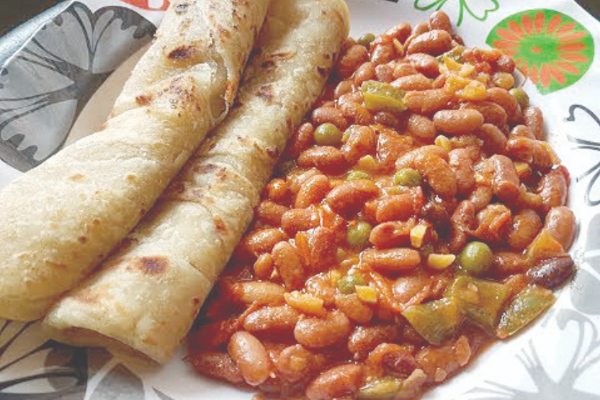Food for thought: How healthy diet is out of reach

There continues to be sustained push for the adoption of a healthy diet for better health outcomes and enjoyable quality of life from different quarters of society.
However, a major segment of the population continues to consume limited food types, which bear overreaching effects. Such is the average urban household and individual who struggles to access affordable meals let alone a nutrient-dense one.
For most urban families, a plate of ugali and sukuma wiki suffices for supper. The exact serving will be replicated the following day perhaps with a piece of red meat. Rice, ugali, beef, mutton and potatoes constitute the primary food diets for most households and individuals.
“The main reason people living in urban settings eat the way they do, is because of exposure and availability of the foods they eat,” says Lilian Mumina, a clinical nutritionist.
She adds: “A family of five may opt to buy mandazis for breakfast for Sh5 each, as opposed to buying arrowroots, which may be a bit costly for them.”
In a research document titled: “The Cost of Healthy Eating in Kenya 2021”, published by the Africa Population and Health Research Center (APHRC), more than half of Kenyan households did not meet recommendations for most of the dietary components except for total fats at 86.7 per cent and dietary fibre at 71 per cent.
Food insecurity
Rural households met more of the healthy dietary recommendations for dietary fibre, total protein and total carbohydrates.
In regards to fruits and vegetables, saturated and polyunsaturated fats, urban households met more of the healthy dietary recommendations compared to their rural counterparts.
Nine out of 10 people in many Sub-Saharan countries cannot afford a healthy diet, according to Food and Agriculture Organisation (FAO). Hunger and undernourishment are a global concern. “Food is expensive, a packet of flour is now going for Sh200 and a kilo of rice for Sh150. When these ordinary meals are this expensive, how are we supposed to eat well let alone healthy?” poses Beatrice Kamwe, a shop operator.
High cost of food
“We do not have farms in town to plant managu or spinach, we depend on store-bought food, which is priced depending on the market forces.”
People are said to be food secure when they have economic access to safe, sufficient, nutritious food that meets their dietary needs and food preference for an active and healthy life. Factors that contribute to food insecurity are diverse and layered, for instance, the cost of nutrient-rich food groups such as some varieties of fruits and vegetables, and oils are elevated for low-income households with an average monthly income of Sh23,000 and below.
In recent times, changes in weather patterns have interfered with farm outputs precipitating a shortage in food products. Even urban farmers have not been able to irrigate their small kitchen gardens to realise meaningful harvests efficiently.
According to World Health Organisation (WHO), a nutritious food diet for adults should include fruit, vegetables, legumes, nuts, and whole grains such as unprocessed maize, millet, oats, wheat and brown rice.
Other specifications include at least 400 grammes of fruit and vegetables per day excluding potatoes, sweet potatoes, cassava and other starchy roots.
Impact of poor diets
“When you are eating one specific type of food, your body will limit the variety of microbes it releases over time that affects the way the body reacts overall,” reveals Mumina.
She continues: “When people change their eating habits at the household level, they will protect their genes and there will be fewer ‘genetic injuries’. Poor diet compromises the quality of DNA.”
Eating poorly can also decrease your body’s ability to fight off illness. Research has found that those with a poor diet are more likely to fall ill, and take longer to make a full recovery from illnesses.
By contrast, those with healthy diets have been found to have stronger overall immune systems, allowing them to fight off illnesses.
In addition to making healthy choices, remember to choose a variety of foods to make sure you’re getting a full range of your needed vitamins and minerals.
No time to eat
Additionally, our fast-paced lifestyles have relegated eating to the list of non-essential tasks. A meal of choice for the most working class is a “diet soda” and French fries. Anything that involves slicing broccoli, dicing carrots, or baking potatoes is deemed laborious and unattractive.
Interestingly, a plate of cooked food consisting of carbohydrates, protein, vegetables, and fibre goes for Sh250 to Sh400 in most restaurants, a distant cheap option to fast foods.
But Kenyans sampled by People Daily pointed to the price, as the stumbling block to eating healthy, underscoring the high cost of healthy foods.
“They say we should eat right yet they make the food expensive and that is why people buy street snacks,” a citizen who wished to remain anonymous said.
According to a 2022 report by the UN accessing the affordability of healthy diets globally, three billion people lack sufficient income to purchase the least-cost form of healthy diets recommended by national governments. Approximately 829 million people living in Sub-Sahara Africa cannot access nutrient-rich foods. About 1.5 billion people cannot afford diets with adequate levels of all essential nutrients.
Among the ways fronted for enhancing an improved healthy diet is reducing the cost of healthy-nutrient foods including fruits, vegetables, and protein-dense foods including dairy. Others include streamlining production and distribution supply chains and reducing contamination and adulteration of food.












